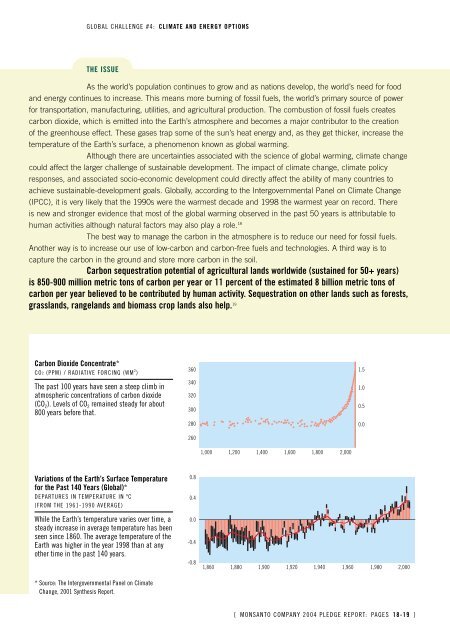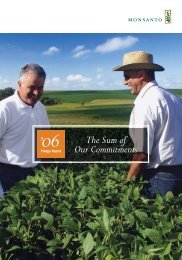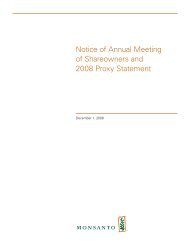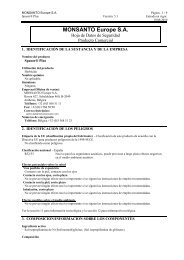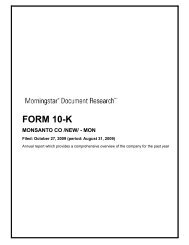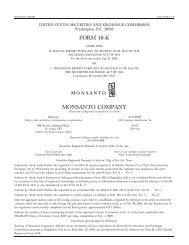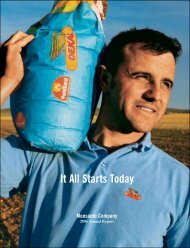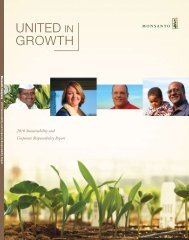You also want an ePaper? Increase the reach of your titles
YUMPU automatically turns print PDFs into web optimized ePapers that Google loves.
GLOBAL CHALLENGE #4: CLIMATE AND ENERGY OPTIONS<br />
THE ISSUE<br />
As the world’s population continues to grow and as nations develop, the world’s need for food<br />
and energy continues to increase. This means more burning of fossil fuels, the world’s primary source of power<br />
for transportation, manufacturing, utilities, and agricultural production. The combustion of fossil fuels creates<br />
carbon dioxide, which is emitted into the Earth’s atmosphere and becomes a major contributor to the creation<br />
of the greenhouse effect. These gases trap some of the sun’s heat energy and, as they get thicker, increase the<br />
temperature of the Earth’s surface, a phenomenon known as global warming.<br />
Although there are uncertainties associated with the science of global warming, climate change<br />
could affect the larger challenge of sustainable development. The impact of climate change, climate policy<br />
responses, and associated socio-economic development could directly affect the ability of many countries to<br />
achieve sustainable-development goals. Globally, according to the Intergovernmental Panel on Climate Change<br />
(IPCC), it is very likely that the 1990s were the warmest decade and 1998 the warmest year on record. There<br />
is new and stronger evidence that most of the global warming observed in the past 50 years is attributable to<br />
human activities although natural factors may also play a role. 18<br />
The best way to manage the carbon in the atmosphere is to reduce our need for fossil fuels.<br />
Another way is to increase our use of low-carbon and carbon-free fuels and technologies. A third way is to<br />
capture the carbon in the ground and store more carbon in the soil.<br />
Carbon sequestration potential of agricultural lands worldwide (sustained for 50+ years)<br />
is 850-900 million metric tons of carbon per year or 11 percent of the estimated 8 billion metric tons of<br />
carbon per year believed to be contributed by human activity. Sequestration on other lands such as forests,<br />
grasslands, rangelands and biomass crop lands also help. 19<br />
Carbon Dioxide Concentrate*<br />
CO2 (PPM) / RADIATIVE FORCING (WM 2 )<br />
The past 100 years have seen a steep climb in<br />
atmospheric concentrations of carbon dioxide<br />
(CO 2). Levels of CO 2 remained steady for about<br />
800 years before that.<br />
Variations of the Earth’s Surface Temperature<br />
for the Past 140 Years (Global)*<br />
DEPARTURES IN TEMPERATURE IN ºC<br />
(FROM THE 1961-1990 AVERAGE)<br />
While the Earth’s temperature varies over time, a<br />
steady increase in average temperature has been<br />
seen since 1860. The average temperature of the<br />
Earth was higher in the year 1998 than at any<br />
other time in the past 140 years.<br />
* Source: The Intergovernmental Panel on Climate<br />
Change, 2001 Synthesis Report.<br />
340<br />
320<br />
Carbon Dioxide Concentration *<br />
CO 2 (PPM) / RADIATIVE FORCING (WM 2 )<br />
360 1.5<br />
300<br />
280<br />
260<br />
0.8<br />
0.4<br />
0.0<br />
-0.4<br />
-0.8<br />
Variations of the Earth’s Surface Tempature<br />
for the Past 140 Years (global) *<br />
1,000 1,200 1,400 1,600 1,800 2,000<br />
DEPARTURES IN TEMPERATURE IN ºC (FROM THE 1961-1990 AVERAGE)<br />
1,860 1,880 1,900 1,920 1,940<br />
1.0<br />
0.5<br />
0.0<br />
1,960 1,980 2,000<br />
{ MONSANTO COMPANY 2004 PLEDGE REPORT: PAGES 18-19 }


